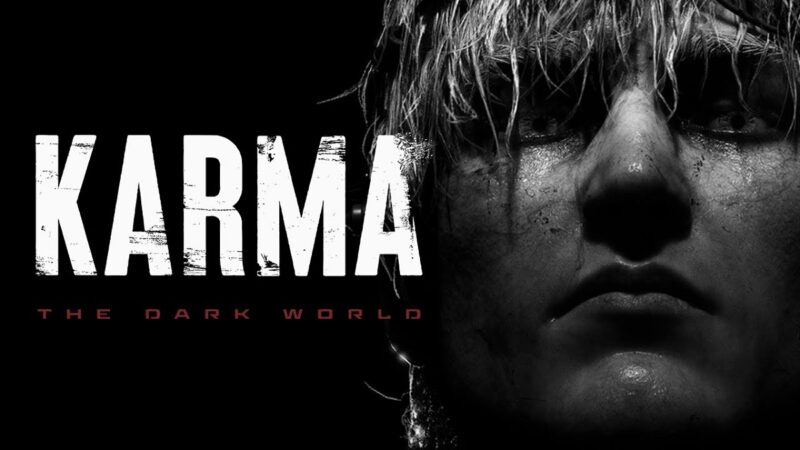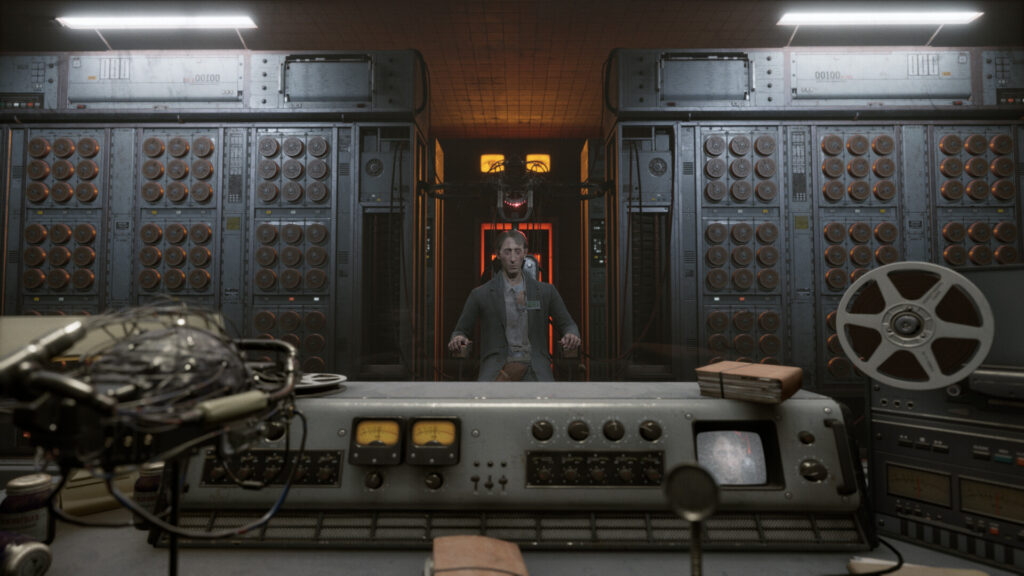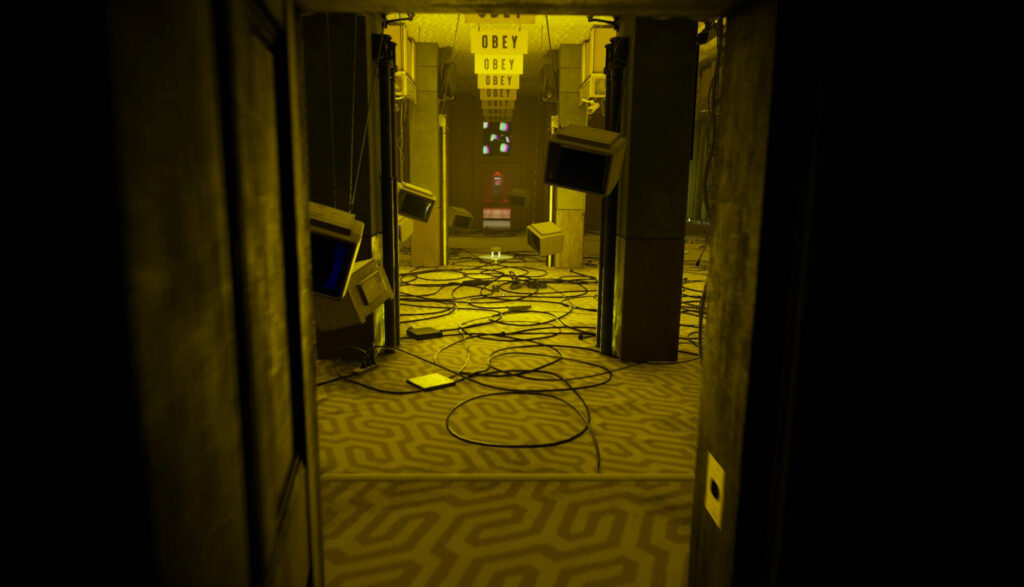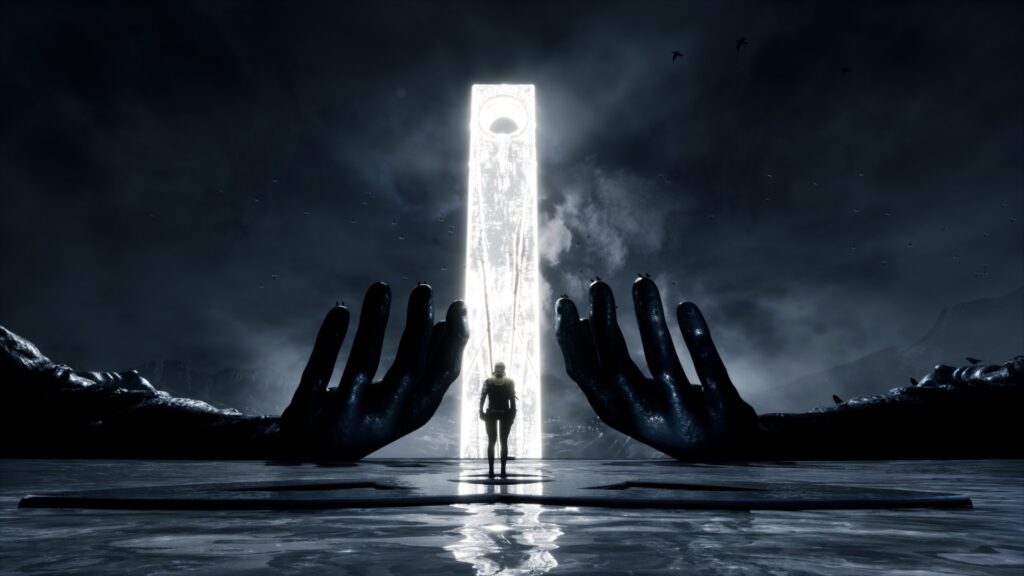
Sometimes a game comes along that doesn’t just unsettle you — it lingers. KARMA: The Dark World, from Chinese indie developer Pollard Studio, is one such title. Deeply atmospheric, visually striking, and soaked in psychological horror, this is a cerebral dive into dystopia that recalls the best of Silent Hill, Observer, and even Black Mirror.
Let’s break it down.
Story
Set in a twisted version of the near future, KARMA: The Dark World introduces players to a bleak and authoritarian society controlled by a corporate regime known as the Leviathan Corporation.
You play as Daniel McGovern, an operative working for the government’s mysterious ROAM division. Your job? Delve into the memories of so-called “traitors” using neural-interfacing technology and extract crucial intel. But what begins as a routine mission quickly spirals into something far more personal and, dare I say, disturbing. Daniel’s latest assignment involves the mind of a man whose thoughts are fragmented and riddled with trauma. As you move through shifting environments representing fractured memories, suppressed truths, and corrupted identities, you realize you’re not just investigating someone else’s past — you’re confronting your own.
The writing in KARMA is intentionally opaque, filled with symbolic imagery, cryptic documents, and dreamlike dialogue. It’s a narrative that demands player interpretation, and while some might find that frustrating, others (myself included) will appreciate the game’s refusal to spell everything out. It’s a story that explores themes of guilt, repression, and surveillance à la Nineteen Eighty-Four, delivered through a surrealist lens that blurs reality and memory.
Gameplay
Mechanically, KARMA: The Dark World is light. There’s no combat, no health bar, and not even a weapon wheel. You’re here to walk, to observe, to solve, and to experience.
Gameplay mostly consists of light puzzle-solving and exploration. You’ll find yourself interacting with strange, symbolic objects and environmental clues to progress deeper into each subject’s psyche. The puzzles are straightforward, but appropriately unsettling. Don’t expect anything too complex; KARMA is more interested in mood than mechanics. That said, the minimal design works in the game’s favor, allowing the world-building and atmosphere to take center stage without unnecessary distractions.
As you move between decrepit government offices, decaying apartments, surreal dreamscapes, and industrial nightmares, you’ll feel like the game is toying with your perception. Spaces loop unexpectedly, whilst hallways twist back on themselves, and rooms change behind you. It’s psychological horror in the purest sense, designed not to shock you, but to wear you down and put you on edge. One standout sequence takes place in a grotesquely overgrown complex; its walls crawling with black veins and flickering lights. The layout is confusing, almost labyrinthine, and the game leans into that disorientation with confidence. There’s always the sense that something is just around the corner, even when there isn’t.
A notebook tracks your objectives, though it’s minimal and meant more as a subtle nudge than a checklist. There are some collectible notes and cryptic texts to uncover, giving context to Leviathan’s grim world and Daniel’s troubled past. These hidden fragments are optional, but do add depth if you’re willing to dig for them.
Visuals
Graphically, KARMA: The Dark World is a triumph of art direction. Running on Unreal Engine 5, it’s hands-down one of the most visually distinct indie horror games I’ve played in recent memory. The environments are dense with detail and dripping in symbolism. Hallways filled with faceless mannequins, grimy corporate offices with security cameras embedded in the walls, and decaying rooms overtaken by writhing black tendrils. The visual style is oppressive, surreal, and deeply unsettling, similar, in many ways, to Alan Wake 2.
Lighting plays a huge role in the game’s mood. Stark contrasts between light and shadow, paired with flickering fluorescents and pulsing red alarms, give every space a claustrophobic and lived-in feel. Ray-traced reflections and volumetric fog enhance the dreamlike quality of each scene.
There are also several jaw-dropping sequences where the game breaks away from grounded horror and enters full surrealist fever dream territory. These moments, while brief, are incredibly effective, showcasing Pollard Studio’s flair for visual storytelling and psychological tension.
The character models are stylized rather than hyperrealistic, which helps maintain the game’s unnerving tone. Occasionally, you’ll spot some stiff animations or awkward transitions, but they never pull you out of the experience. If anything, they add to the dreamlike artificiality of the whole thing.

Sound Design
Where KARMA truly excels is in its sound design. From the very first screen, the game uses sound as a weapon, quiet and effective.
Dripping water, distant footsteps, the low hum of flickering monitors, disembodied whispers that rise and fall in your headphones like a tide of unease. The ambient soundtrack is subtle but always present, designed to keep your heart rate just slightly elevated at all times. The lack of traditional music in many areas forces you to focus on every little sound around you, heightening your awareness and reinforcing the game’s central themes of surveillance and paranoia.
And when the score does kick in, it’s used sparingly, but with precision; a rising synth here or a dissonant piano chord there. Everything is tuned to maximum psychological impact. Voice acting is limited but decent. Daniel’s internal narration feels authentic, and the sparse dialogue from other characters is delivered with just enough menace or sorrow to keep you guessing.

Performance
I played KARMA: The Dark World on a gaming laptop with a mid-range setup and was pleased with how well it performed. Load times were short, framerate was stable, and despite the heavy use of post-processing effects and dynamic lighting, I encountered no crashes or major bugs during my playthrough.
That said, there were a few animation hitches and some clunky transitions between scenes. A few UI prompts also felt unpolished, but nothing that ruined the experience. For an indie title, it’s remarkably stable and visually ambitious.
Recommended specs include an Intel i7 and at least an RTX 3070, which seems reasonable given the graphical fidelity. The game supports both DX11 and DX12.
Conclusion
KARMA: The Dark World is a short but powerful entry in the psychological horror genre. It’s not here to deliver jump scares or combat-heavy gameplay. Instead, it invites you to question what’s real, what’s remembered, and what’s being hidden. While it doesn’t overstay its welcome, it ends a little sooner than you’d expect, leaving you with more questions than answers. Overall, you’re looking at a 7-10 hour runtime max. But for those few hours, it’s more than just your standard walking sim in terms of atmosphere, sound design, and visual storytelling.
If you’re into games that make you feel something — cold, uneasy, or strangely beautiful — then this one’s for you. Just don’t expect comfort. KARMA doesn’t care if you leave satisfied. It only wants to be remembered.
KARMA: The Dark World is available now on Steam.
 (8 / 10)
(8 / 10)
Great
 (8 / 10)
(8 / 10)Rely on Horror Review Score Guide
A review code for PC was provided by the developer.






